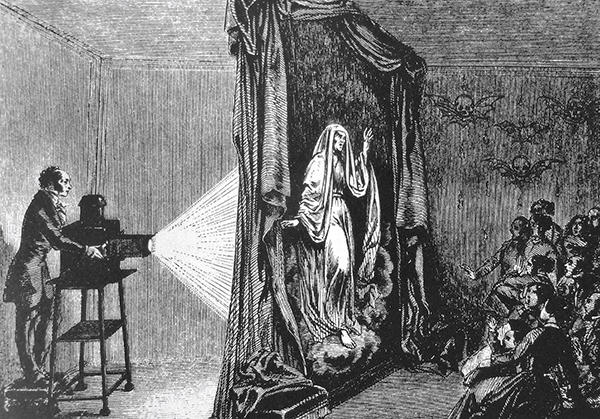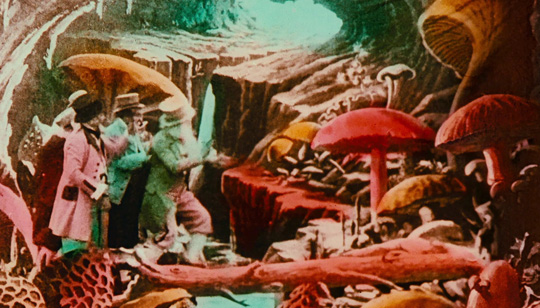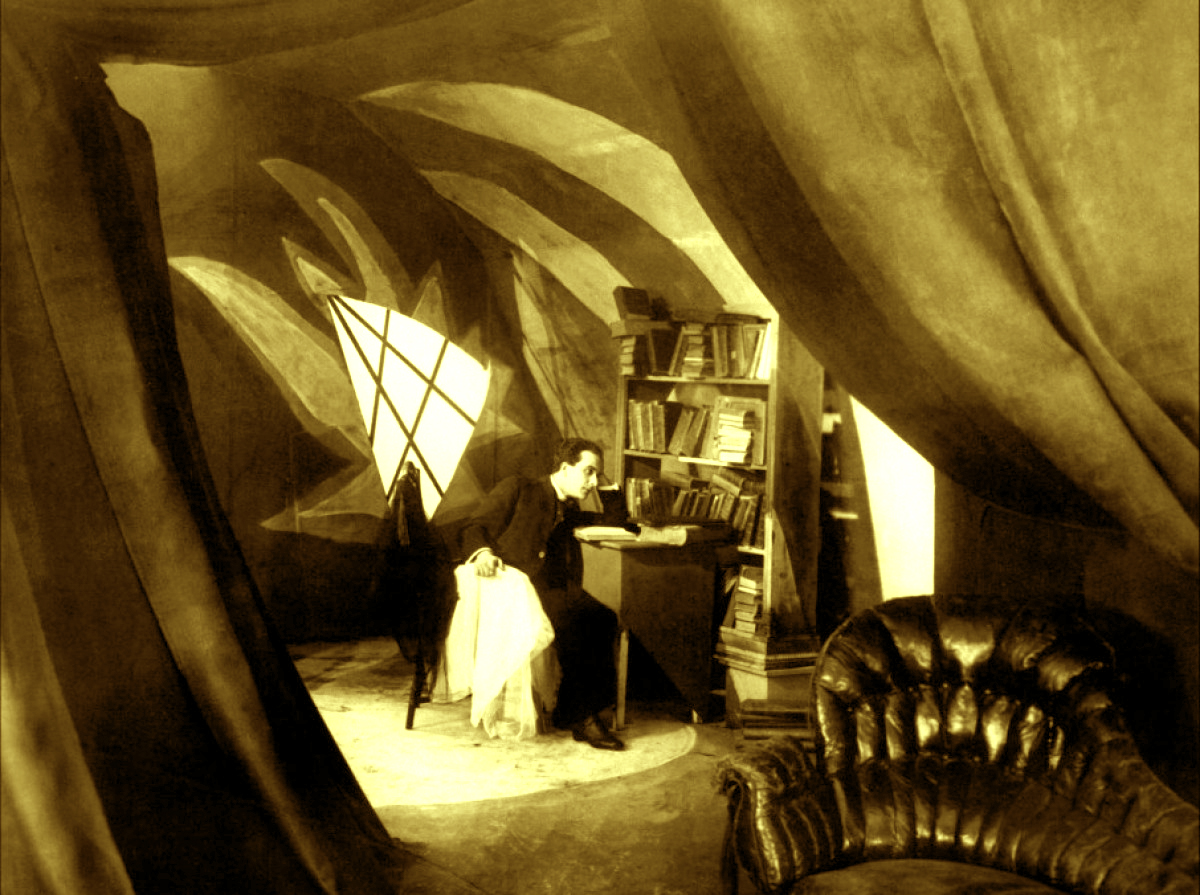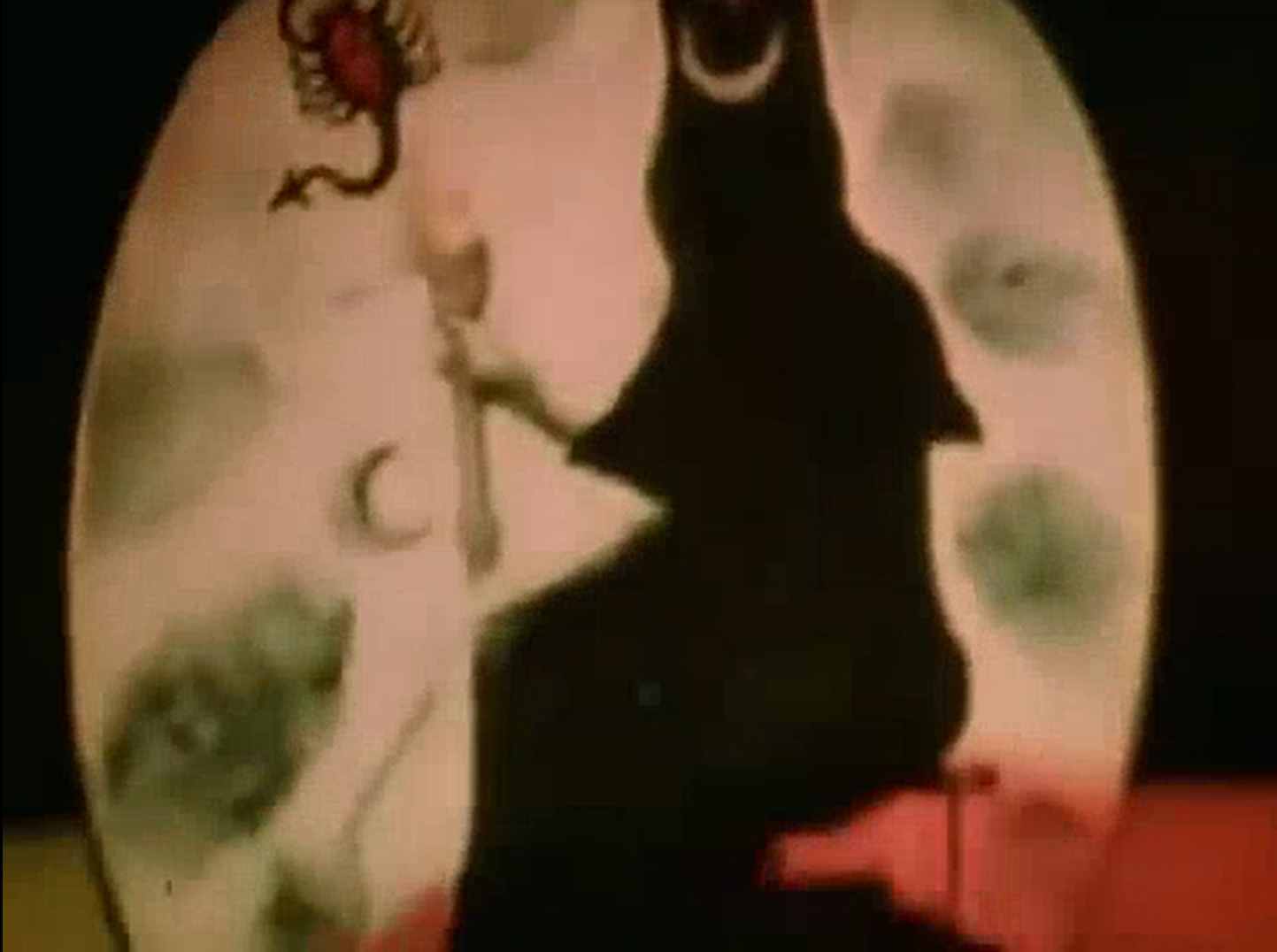
PLATO`S CAVE TIMES FIVE
A film by Gustav Deutsch
Treatment
Synopsis
PLATO´S CAVE TIMES FIVE is a cinematic adaptation of the cave allegory of the Greek philosopher Plato in five episodes. Each episode addresses a different interpretation of the allegory, and is enacted as a reference to a film genre/subgenre of the history of film and its precursors:
1. Education >< Shadow Theatre / Phantasmagoria /magic lantern show
2. Culture >< Cinema of attractions / slapstick film
3. Politics >< German expressionism / Film noir
4. Religion >< Mystical Avantgarde film / Horror film
5. Media >< Science fiction / Fantasy film
In this film, Plato´s cave becomes the scene of the action. In three-dimensional sets, in which the cave is interpreted differently, both spatially and artistically, five times, the story of the liberation of a person from a repressive illusory world, his path of knowledge, his illumination and his missionary return to his fellow prisoners in the cave is shown in five enactments with different sequences of action. The setting, the action, the dialogues, as well as the perspective, the camera movement, the light and the sound develop from episode to episode by reference to the history of the film and its genres.
2,500 years after Plato, his allegory of the cave is of unbroken topicality with respect to the five themes of the episodes. In an age of galloping consumerism, of fear-stoked xenophobia, populist politics, religious fanaticism and an uncontrolled media presence, the rise from the sensually perceptible world of transitional things in the cave into the purely intellectual world of immutable being appears to be a necessary educational path that is equivalent to a process of liberation.
Film and the cinema, as medium and as place of entertainment and education, play a dual role in the sense of the allegory of the cave. PLATO´S CAVE TIMES FIVE is intended to do justice to both roles: as a film that tells a story in five versions, in the manner of an entertaining “didactic play”, the setup of which is simultaneously reflected in the cinema auditorium with its cinema audience.
The film is to be developed and implemented in cooperation with representatives from the artistic disciplines of painting, sculpture, dance, music, fashion and architecture. It is the same team with whom I worked on SHIRLEY – Visions of Reality (2013).
PLATO´S CAVE TIMES FIVE – The story
The allegory of the cave
The allegory of the cave is one of the most famous allegories of ancient philosophy. In Politeia (The Republic), Plato has the story related by his teacher Socrates in discussion with Plato's brother Glaucon. In the proposed film, the allegory will be staged in the first episode (Education) in an abbreviated and linguistically revised form as a dialogue between Socrates and Glaucon (see pages 12-14).
In the further episodes, the story within the allegory is staged in four interpretations with different actions, monologues, dialogues and intertitles, set in the time and against the political and cultural background of the film genre selected in each case. All this is part of the story development.
Plato's allegory concerns people living in a cave and shackled from childhood in such a way that they cannot move. They cannot even turn their heads, and so they are always looking only at the opposing cave wall. They have an idea neither of the exit that is behind them nor of the fire on the way to the exit, the glow from which illuminates the wall.
Between the prisoners and the fire there is a wall. Behind it, warders move backwards and forwards, holding objects above the wall that cast shadows on the cave wall. The prisoners consider the shadows to be reality and propose theories about rules that allow them to make predictions about future events.
One of the prisoners is released, he turns around and is initially blinded by the light of the fire. What he sees he regards to be less real than the shadows on the wall and he is confused, since his previous experiences are now called into question and he would prefer to go back to his original place.
He is dragged out of the cave into the sun, and to begin with sees nothing in the dazzling light. It is only in the course of time that he realises that the shadows are created from sources of light and have no reality of their own. Gradually, the situation becomes clear. The importance of the sun and the experience of the seasons.
He returns to his place in the cave, his eyes now accustomed to sunlight, in order to tell his fellow prisoners about his discoveries, but he finds it difficult to recognise anything at all on the dark wall and for this reason cannot keep up with the assessment of the shadows and the predictions.
Accordingly, his fellow prisoners regard his tales as nonsense and declare that it is impossible for there to be an outside. They even threaten to kill the one who wanted to take them outside.






